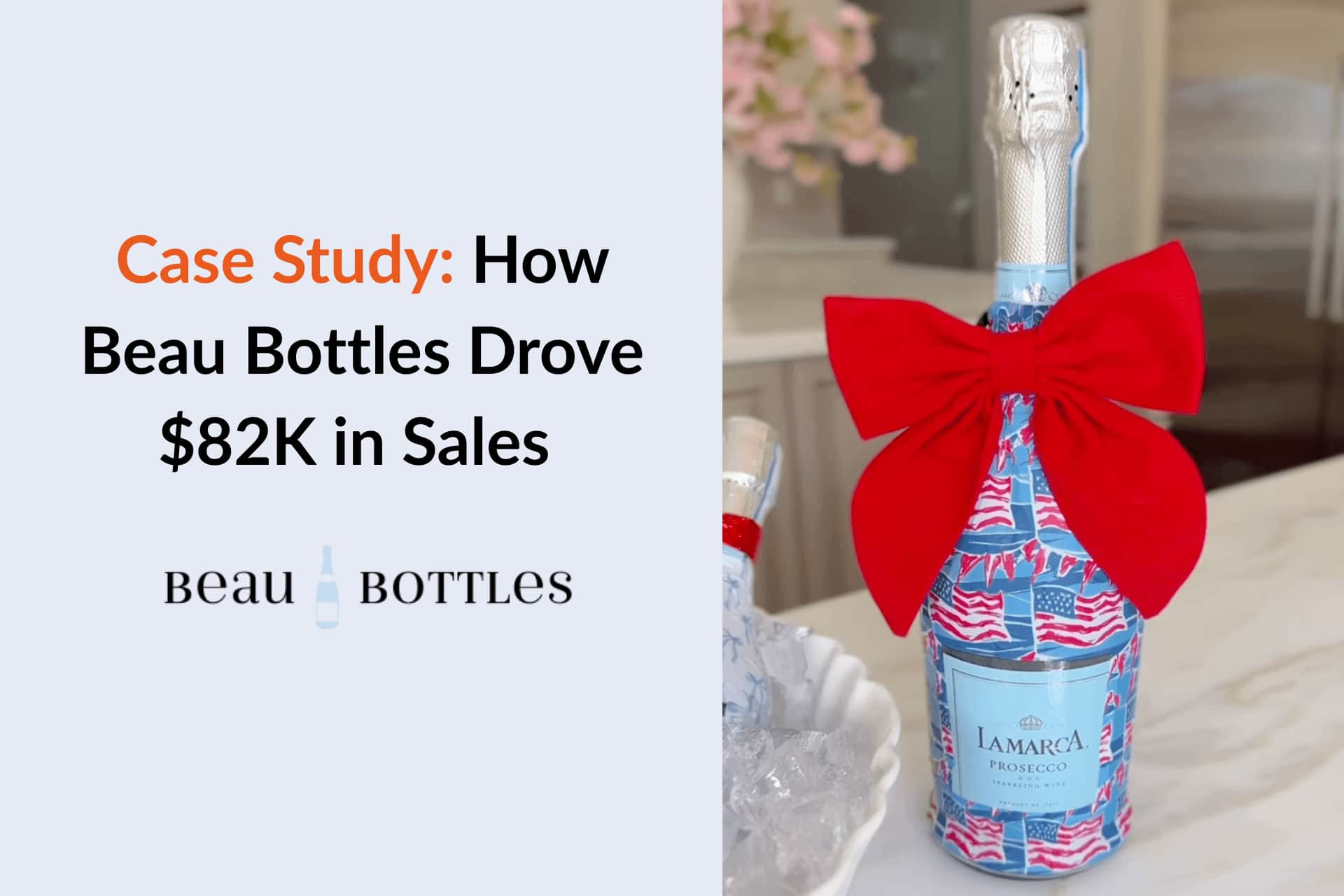





While Influentia has gained recognition in the influencer marketing space, it also presents several recurring challenges that lead brands to explore alternatives. The platform is often noted for its limited affiliate tracking features, slower customer support response times, and pricing structures that can become restrictive for small to mid-sized businesses. These limitations create friction for companies seeking scalable and transparent solutions to manage influencer partnerships effectively.
In this article, we’ll explore the top 10 Influentia alternatives:
While Influentia offers a solid foundation for influencer marketing, recurring feedback from industry reviews and community discussions highlights several limitations that push brands to explore better-suited alternatives. Below are four of the most frequently mentioned concerns:
Users note that Influentia lacks advanced affiliate tracking capabilities, making it harder to measure ROI from influencer campaigns and attribute conversions accurately. This limitation can be a major drawback for brands focused on performance-driven marketing.
Several reviews mention delays in customer support response times, with users experiencing slower resolutions to technical issues or onboarding questions. For brands managing time-sensitive campaigns, this can lead to operational setbacks.
Although Influentia provides competitive features, its pricing structure is often described as restrictive for startups and mid-sized businesses. Many users express that they end up paying for features they don’t fully utilize, reducing overall cost efficiency.
Another common pain point is the platform’s reporting functionality, which some users feel lacks the depth needed for actionable insights. Marketers looking for customizable dashboards and detailed performance metrics often find Influentia’s analytics insufficient compared to other solutions.
Our comparison focuses on several key aspects:

Best For: Influentia is best for brands and agencies targeting French or Francophone markets, particularly those in finance, banking, or investment sectors who want influencer vetting and local campaign management.
Platform Coverage:
Pricing: Influentia’s pricing is not transparently listed. Based on our research, entry-level plans are reported to start at €399/month, but details on tiers or inclusions are unclear. Companies must book a demo to receive accurate pricing tailored to their needs.
Reviews: No verified public reviews available on major platforms such as G2, Capterra, or Trustpilot.
Ease of Use (UX/UI): Users note that features like group messaging, content collection, and automatic reporting help streamline campaigns. However, the lack of user reviews leaves uncertainty about how intuitive the interface is for beginners.
Customer Support: Public details on support are scarce. No confirmed data on hours, onboarding, or training. Some sources suggest that customer-facing profiles (e.g., G2) have been inactive, raising questions about responsiveness and prioritization of support.

Best For: Influencer Hero is best for D2C and eCommerce brands looking to scale their influencer marketing campaigns across multiple platforms with a strong focus on ROI. Its all-in-one platform design makes it ideal for growing teams that want to streamline discovery, outreach, campaign management, and reporting.
Platform Coverage:
Pricing: Influencer Hero offers flexible pricing plans to accommodate growing brands. All plans include core features and can scale as the influencer program grows.
Reviews: 5.0 / 5.0 (Capterra)
Ease of Use (UX/UI): Influencer Hero is widely recognized for its intuitive design and user-friendly interface, featuring a clean dashboard and drag-and-drop campaign setup. Users highlight how the automated workflows, customizable email templates, and Chrome extension save hours of manual work each week. The platform is built for speed and clarity, enabling even non-technical teams to launch campaigns quickly without a steep learning curve.
Customer Support: Customer support is one of Influencer Hero’s strongest differentiators. The platform delivers 24/7 real-human live chat, responsive email support, and a comprehensive Help Center with written and video tutorials. Every plan includes a dedicated account manager from day one, with optional strategy consultations available, while Pro plan users also get access to a private Slack channel for quicker, continuous support.
While Influentia is positioned as a France-focused platform specializing in finance and regulated industries, Influencer Hero provides global coverage across eight major social platforms and caters to a much wider range of verticals. Influentia’s strength lies in its local influencer pool and finance-focused legal support, but its pricing starts at around €399/month with limited integrations and less clarity on features.
By contrast, Influencer Hero offers transparent pricing from $649/month, scaling to enterprise-level with flexible plans, and includes advanced AI workflows, Shopify/WooCommerce gifting integrations, and affiliate sales tracking.
For brands seeking an all-in-one solution that combines automation, scale, and premium customer support, Influencer Hero represents a more comprehensive and scalable alternative compared to Influentia.
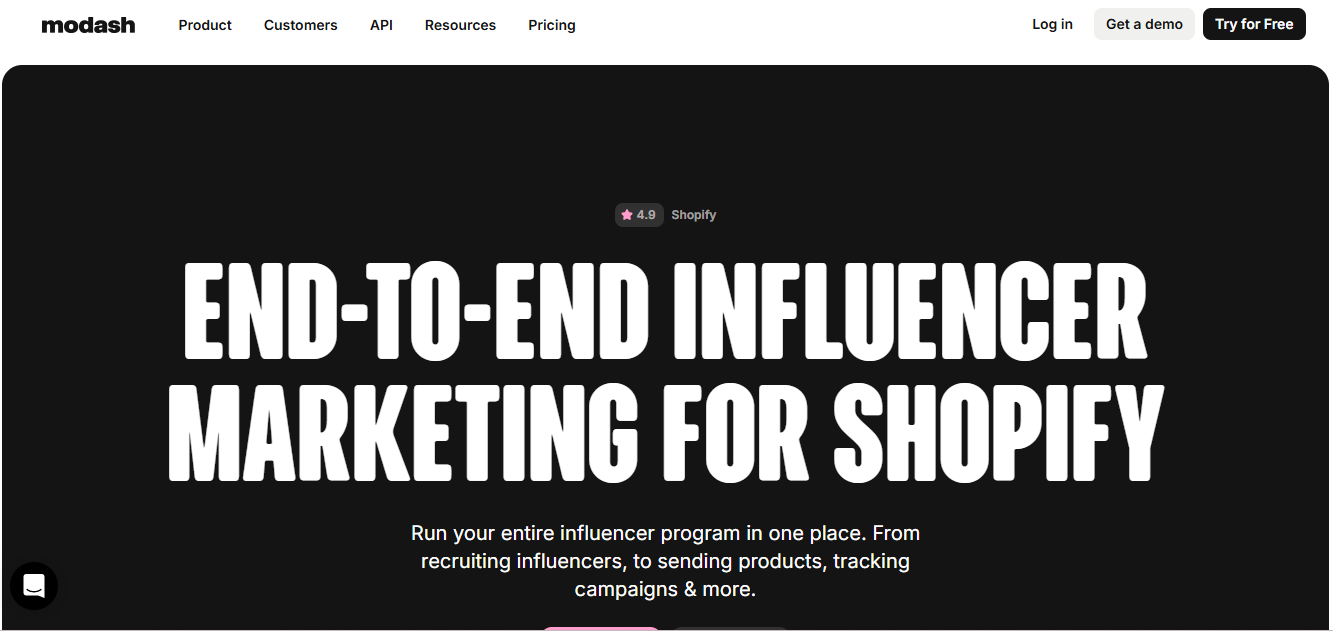
Best For: Modash is best suited for eCommerce brands, especially those on Shopify, that need to scale influencer discovery, manage affiliates, and automate payouts efficiently. It’s also strong for global brands looking to identify creators across multiple markets, given its access to over 350M+ creator profiles.
Platform Coverage:
Pricing: There are different plans and options.
Reviews: 4.7/5 (G2)
Ease of Use (UX/UI): Users describe Modash as having a streamlined workflow that connects discovery, outreach, tracking, and payouts in one platform. The advanced filters, AI-powered discovery, and bulk outreach options make it intuitive for running large-scale campaigns. However, the lack of multi-platform integrations can limit flexibility for non-Shopify brands.
Customer Support: Modash is recognized for helpful onboarding and support teams that guide clients through setup and campaign execution. Customer success managers are responsive and knowledgeable, but some users note that feature limitations (e.g., licensing, integrations) sometimes require workarounds or external tools.
While Influentia focuses heavily on the French and Francophone markets, offering a strong base of ~100,000 verified influencers with features like fake follower detection and group messaging, it is limited in scale and integrations. In contrast, Modash provides access to 350M+ creator profiles across Instagram, TikTok, and YouTube, making it significantly broader for global campaigns.
Another key difference lies in pricing transparency. Influentia’s pricing is not publicly listed and starts from around €399/month, whereas Modash clearly publishes its plans at $199/month (Essentials) and $499/month (Performance), billed annually.
For brands seeking affordability, transparency, and Shopify automation, Modash may be the stronger choice. However, for companies targeting French-speaking regions with niche local expertise, Influentia remains relevant.

Best For: Upfluence is best for eCommerce brands, agencies, and enterprises that want to integrate influencer marketing with affiliate and ambassador programs. Its strong integrations with Shopify, WooCommerce, and other eCommerce platforms make it especially effective for brands looking to track ROI directly from influencer campaigns.
Platform Coverage:
Pricing:
Reviews: 4.5/5 (G2)
Ease of Use (UX/UI): Users generally find Upfluence’s interface comprehensive but slightly complex due to the breadth of its features. The dashboard provides advanced filters for influencer discovery and campaign management, though some reviewers mention that the learning curve can be steep for beginners. Once accustomed, the workflows are praised for providing a detailed view of influencer performance and ROI tracking.
Customer Support: Upfluence offers dedicated account managers and responsive support for enterprise clients, which many users appreciate. However, smaller clients sometimes note that support can feel slower or less hands-on compared to competitors. Onboarding is considered helpful, though ongoing support quality varies depending on the plan chosen.
Influentia is primarily geared toward the French and Francophone markets, offering access to ~100,000 local influencers with features like fake follower detection and content collection. This makes it well-suited for regional campaigns targeting France. In contrast, Upfluence operates globally with millions of influencers in its database, making it more versatile for international brands.
A key distinction lies in pricing and scale. Influentia starts at around €399/month but provides fewer integrations and limited global coverage. Upfluence, while significantly more expensive, caters to mid-market and enterprise clients with robust eCommerce integrations (Shopify, WooCommerce) and affiliate management capabilities.
For brands targeting France-specific campaigns, Influentia is a leaner, cost-effective choice. However, for eCommerce-driven companies seeking international reach and advanced ROI tracking, Upfluence provides far more comprehensive tools and integrations, albeit at a higher investment.

Best For: Captiv8 is best for brands and agencies running large-scale influencer campaigns that require AI-driven discovery, advanced analytics, and enterprise-level solutions. It’s particularly strong for companies managing multi-platform campaigns across Instagram, TikTok, YouTube, and more.
Platform Coverage:
Pricing: There are different pricing options:
Reviews: 4.1/5 (G2)
Ease of Use (UX/UI): Users generally find Captiv8’s interface feature-rich but slightly complex compared to lighter platforms. While the dashboard provides deep campaign insights, some reviewers mention that it comes with a learning curve for new users due to the sheer volume of data and options.
Customer Support: Customer support receives positive feedback for being responsive and knowledgeable, especially for enterprise clients. However, some smaller teams feel that dedicated support tiers are more focused on large clients, making the experience less personalized for mid-market users.
The main difference between Influentia and Captiv8 lies in pricing and scalability. Influentia is budget-friendly with its managed service model at around $1,000/month delivering 30–40 influencers, making it ideal for startups and mid-sized brands that need predictable results without heavy investment. On the other hand, Captiv8 is an enterprise-grade platform with AI-powered discovery, fraud detection, and advanced analytics, best suited for large brands or agencies running multi-platform campaigns.
If you’re a smaller brand looking for affordable influencer discovery and direct account manager support, Influentia may be the better fit. But if you’re managing large-scale, multi-channel campaigns and need deep reporting with AI-driven insights, Captiv8 is the stronger option, albeit at a higher price point.

Best For: CreatorIQ is best for large enterprises and global brands that run influencer campaigns across multiple regions and require advanced governance, workflow automation, and integration with existing enterprise systems. It’s especially suited for brands with big budgets that need to scale influencer marketing with deep analytics and compliance features.
Platform Coverage:
Pricing: There are different plans:
Reviews: 4.7/5 (G2)
Ease of Use (UX/UI): Users highlight that CreatorIQ’s interface is powerful but complex, reflecting its enterprise-grade design. While experienced marketing teams value its detailed dashboards and customization options, new users often face a steeper learning curve compared to lighter tools. Once onboarded, teams appreciate the ability to manage large-scale campaigns seamlessly.
Customer Support: CreatorIQ provides dedicated account managers and tailored onboarding programs, ensuring enterprise clients receive hands-on guidance. However, due to its size and focus on large organizations, support can sometimes feel less flexible or slower compared to smaller, more agile platforms. Still, clients generally find the team knowledgeable and responsive when handling complex campaign needs.
When comparing Influentia with CreatorIQ, the key differences come down to scale, pricing, and market focus. Influentia is a France-based platform with a strong regional focus and pricing starting at €399/month, making it far more accessible to small and mid-sized brands targeting French or Francophone markets.
CreatorIQ, by contrast, operates at the enterprise level, offering highly advanced analytics, integrations, and compliance tools—but at a much higher cost, often in the tens of thousands annually.
For brands focused on local French campaigns or working in the finance niche, Influentia is a leaner, more affordable option with features like fake follower detection and group messaging. However, for global enterprises running large-scale influencer programs, CreatorIQ stands out with its governance, fraud detection, and enterprise integrations. In short, choose Influentia for regional affordability and niche expertise, and CreatorIQ for global enterprise-grade operations.

Best For: HypeAuditor is best for brands and agencies that prioritize data-driven influencer marketing decisions, especially those focused on detecting fake followers, audience authenticity, and campaign transparency. It’s a strong fit for teams that want deep analytics before investing in influencer partnerships.
Platform Coverage:
Pricing: HypeAuditor’s pricing is customizable, with the standard “Business” plan starting at around $10,000/year. Pricing can be adjusted based on the number of reports, active campaigns, and platform usage. They also offer a 24–48 hour free trial for new users.
Reviews: 4.6/5 (G2)
Ease of Use (UX/UI): Users describe HypeAuditor as intuitive and straightforward, with dashboards that make influencer vetting easy to understand even for non-technical marketers. The navigation is clean, and most users highlight how quickly they can access audience insights and fraud detection tools. However, some mention that the advanced analytics may feel overwhelming at first.
Customer Support: Customer feedback notes that HypeAuditor provides helpful and responsive support, especially when onboarding new users to their analytics tools. While live chat and email are readily available, a few users mention that dedicated account management is limited to higher-tier plans, which may require smaller brands to rely on self-service resources.
When comparing Influentia vs HypeAuditor, the biggest difference lies in pricing and focus. Influentia offers a budget-friendly managed service at $1,000/month, providing 30–40 pre-vetted influencers monthly, which makes it attractive for small to mid-sized brands that need predictable costs and hands-on support. HypeAuditor, on the other hand, is more of a self-service analytics powerhouse, ideal for larger brands and agencies that need detailed fraud detection, audience analytics, and benchmarking.
While HypeAuditor stands out for its robust data and AI-driven authenticity checks, it comes at a higher cost and requires more hands-on management from brands. Influentia is more suitable for those who want a done-for-you solution with personal account management, while HypeAuditor is best for those who want control, advanced analytics, and scalability.
Choose Influentia if affordability and managed influencer sourcing are your priorities, but go with HypeAuditor if you need advanced analytics and fraud detection across multiple channels.

Best For: GRIN is best for eCommerce and DTC brands that want to manage influencer campaigns end-to-end—covering influencer discovery, outreach, gifting, payments, UGC collection, and performance tracking in a single platform. It’s especially valuable for brands already using Shopify, WooCommerce, or Magento.
Platform Coverage:
Pricing:
Reviews: 4.5 / 5.0 (G2)
Ease of Use (UX/UI): Users say GRIN offers a comprehensive all-in-one workflow, making it easier to manage influencer relationships and campaigns without juggling multiple tools. However, the breadth of features can feel overwhelming at first, and some report performance issues like slow loading and glitches, which disrupt the experience.
Customer Support: Customer support feedback is mixed. While many users praise the strategic onboarding and dedicated program strategists, others mention long response times, unresolved tickets, or being billed for broken features. The support team is seen as knowledgeable but sometimes inconsistent in follow-through.
Influentia is a France-based platform with a strong local database of ~100,000 French influencers, making it ideal for brands targeting French or Francophone markets at a lower entry point (starting around €399/month).
By contrast, GRIN is a global, enterprise-level solution with deep eCommerce integrations and AI-powered tools, but pricing starts at $25,000/year, which can be out of reach for smaller teams.
Choose Influentia if you’re a brand or agency focused on France/Europe, finance-related influencers, or campaigns requiring local expertise. It offers strong vetting, fake follower detection, and content collection tools at a lower cost. On the other hand, choose GRIN if you’re a DTC or eCommerce brand managing large-scale influencer programs, needing end-to-end automation, affiliate tracking, and integrations with platforms like Shopify and PayPal.
Influentia is cost-effective and regionally specialized, while GRIN is best for larger eCommerce brands seeking global reach and advanced automation.
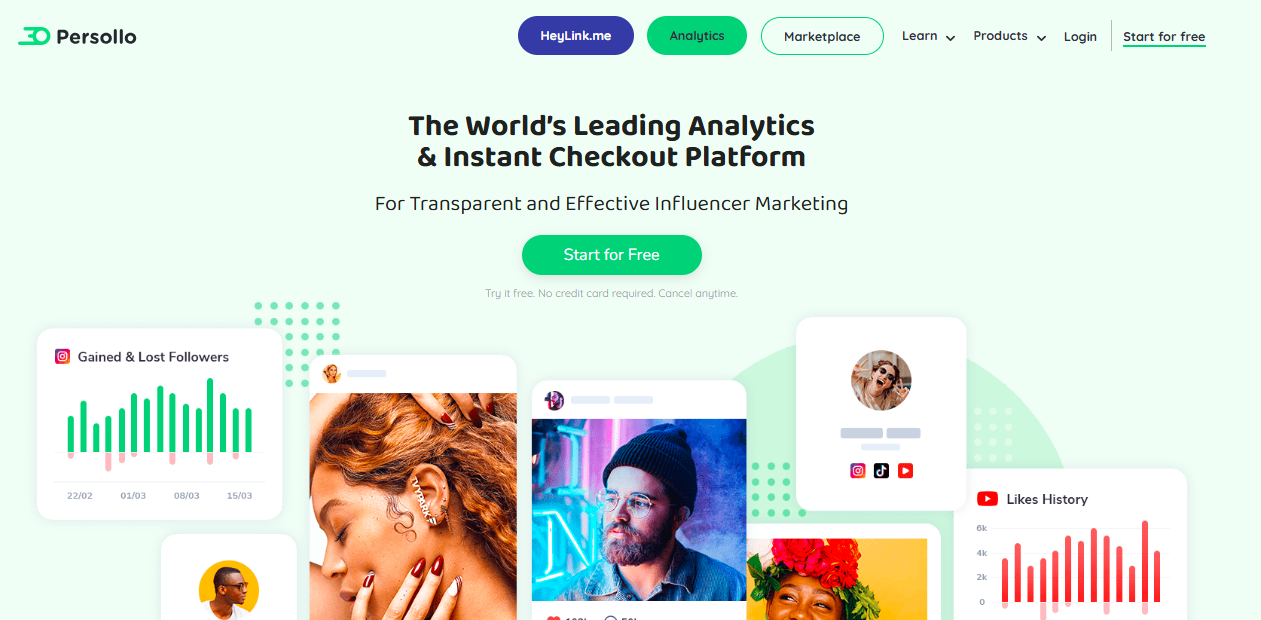
Best For: Persollo is best for brands and influencers in fashion, beauty, and lifestyle that want to drive impulse purchases directly from social media posts through instant checkout links.
Platform Coverage:
Pricing: Based on our research, Persollo offers different plans and options.
Reviews: No verified public reviews available on major platforms such as G2, Capterra, or Trustpilot.
Ease of Use (UX/UI): Persollo is designed for simplicity and speed. Users highlight that the platform is easy to set up, with instant checkout links that can be launched without requiring complex e-commerce infrastructure. Its straightforward UX makes it attractive for smaller brands that need quick implementation.
Customer Support: Publicly available details on Persollo’s support are limited. While enterprise plans include dedicated support, the free and lower-tier plans have unclear or less visible support channels, which can make it challenging for smaller users to get timely assistance.
While both Persollo and Influentia are influencer marketing solutions, they serve very different purposes. Influentia is best for brands targeting French or Francophone markets, offering a database of over 100,000 local influencers with analytics, fake-follower detection, group messaging, and automated campaign reporting. In contrast, Persollo is focused on social commerce and instant checkout, turning influencer content into direct sales with its one-click checkout technology.
Pricing is another key difference. Influentia’s pricing starts around €399/month and is geared toward agencies or brands running structured campaigns, whereas Persollo offers a free tier with transaction-based fees (3.9% + $0.30 per sale) and scales up with business and custom plans.
In short, choose Influentia if you need regional influencer campaign management in France with discovery and vetting tools, and choose Persollo if your priority is seamless social commerce and driving instant conversions from influencer posts.
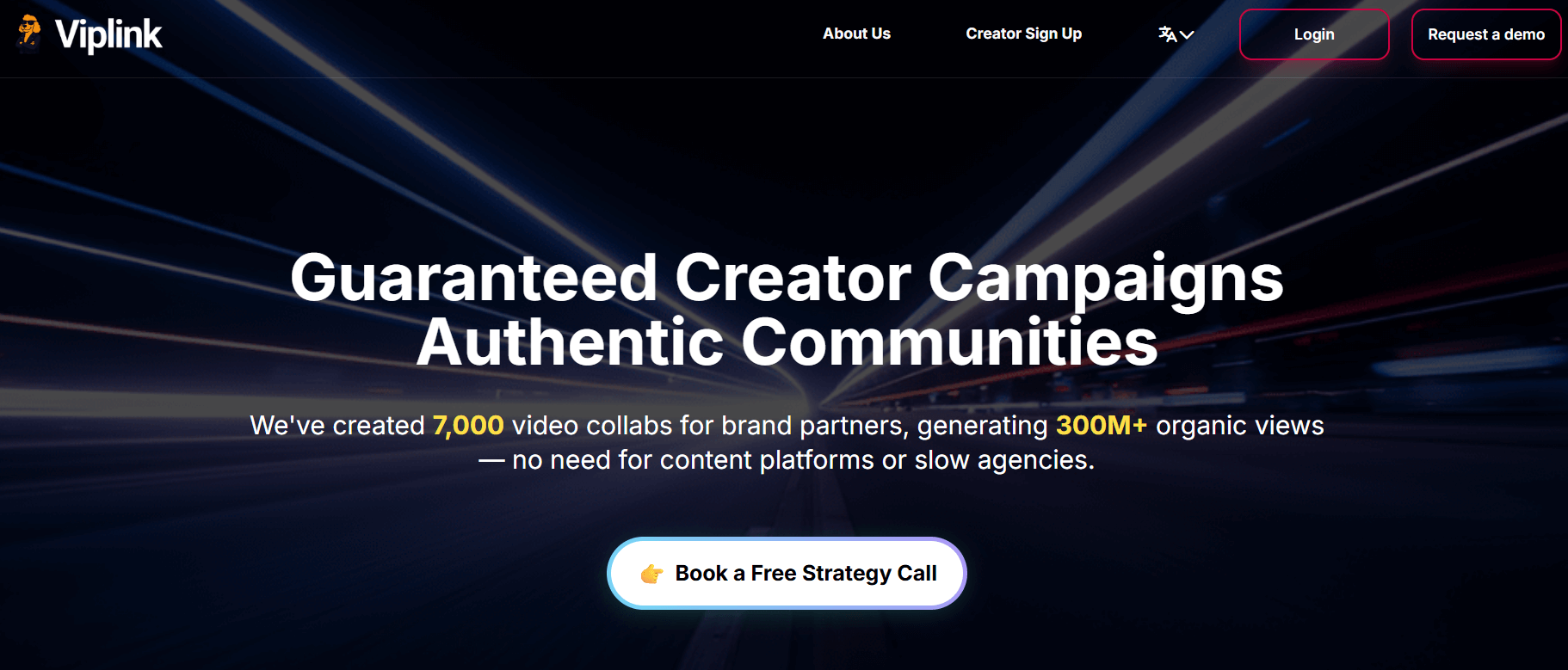
Best For: Viplink AI is best suited for consumer brands, DTC companies, and marketing teams that want to activate creators and user-generated content campaigns without upfront costs. The platform works especially well for brands seeking authentic engagement across TikTok, Instagram, YouTube, and Facebook.
Platform Coverage:
Pricing: No upfront fees; payment is only required once you approve creators and content. However, brands have to pay an additional fee—amount not publicly disclosed—based on what is paid to each creator.
Reviews: 4.4/5.0 (G2)
Ease of Use (UX/UI): The platform is praised for its one-click approval system, which minimizes back-and-forth communication and keeps brands in control. The dashboards are streamlined and automated, allowing easier creator and content management. However, some users have noted that internal collaboration features and geographic reach could be expanded.
Customer Support: Viplink AI provides end-to-end campaign support, managing briefings, timelines, and community activations while still giving brands final approval control. Users highlight clear communication from the support team, though they would appreciate more transparency around updates and feature rollouts.
Influentia specializes in the French and Francophone markets, offering access to over 100,000 local influencers along with advanced analytics like fake follower detection, audience interest insights, and automatic campaign reporting. This makes it particularly appealing to brands targeting European financial or regulated industries where compliance and local expertise are critical.
Viplink AI, by contrast, focuses on UGC-driven, full-service campaigns across global platforms such as TikTok, Instagram, YouTube, and Facebook. Its no-upfront-cost model and smart auction system allow brands to launch campaigns with less financial risk, paying only once they approve creators and content. However, the platform lacks the regional specialization that Influentia offers and introduces uncertainty with undisclosed additional fees.
In short, choose Influentia if you need strong access to the French market, local influencer vetting, and structured reporting. Choose Viplink AI if you prefer a low-risk, scalable approach to UGC campaigns across multiple global platforms and value streamlined content approval.
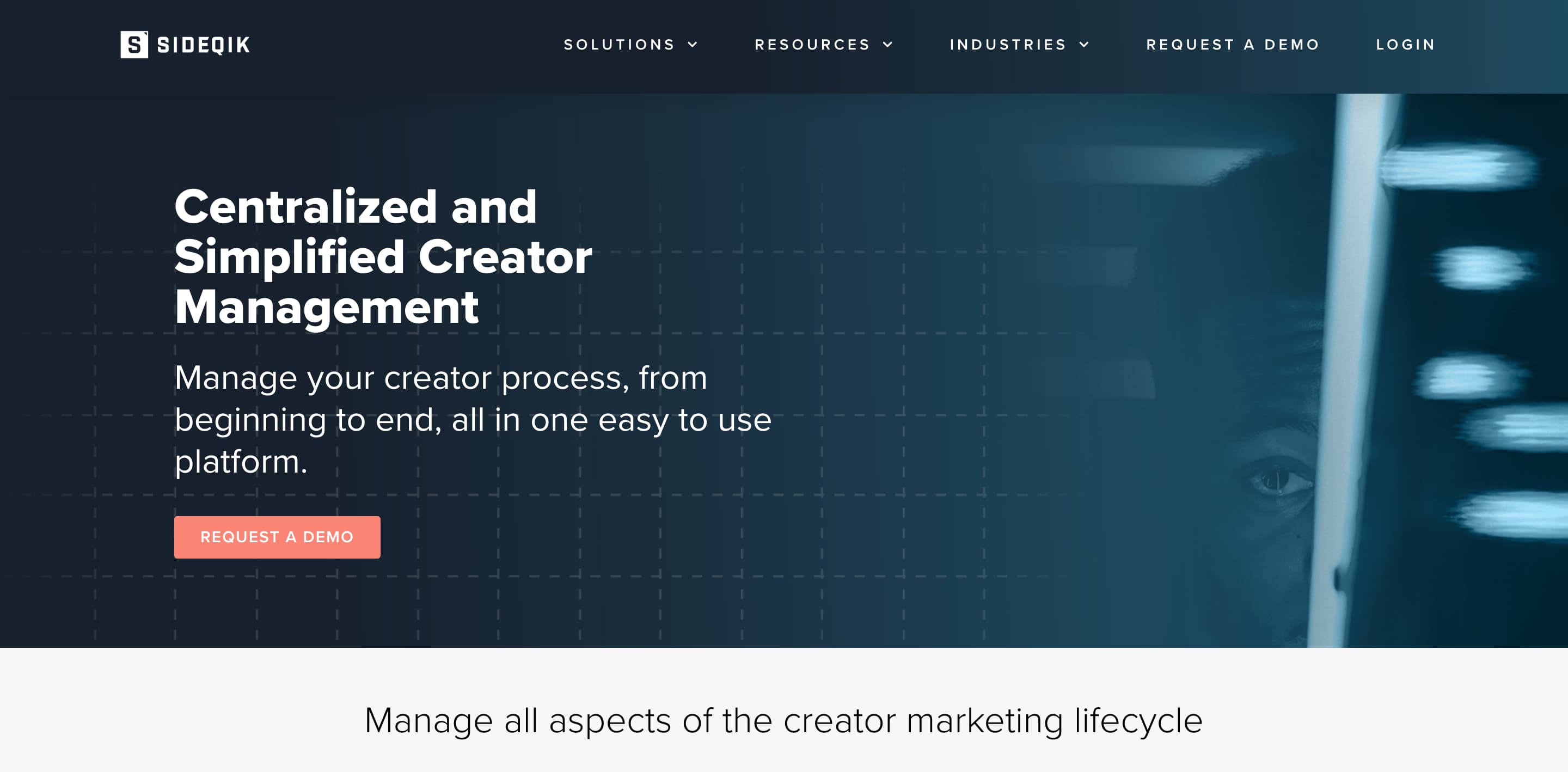
Best For: Sideqik is best for mid-market and enterprise brands that want end-to-end creator workflows, covering discovery, campaign execution, ROI attribution, and especially those needing strong coverage in the Twitch/streaming ecosystem.
Platform Coverage:
Pricing: Undisclosed.
Reviews: 4.2 / 5.0 (G2)
Ease of Use (UX/UI): Users highlight that Sideqik is generally intuitive and time-saving when it comes to discovery, campaign tracking, and pulling content. However, some reviews note that the admin UI can feel cluttered, with filters and custom time-frame reporting not as strong as expected.
Customer Support: Sideqik earns praise for its responsive and collaborative account teams, with many reviewers noting the support staff’s openness to feedback and feature requests. On the flip side, a few users reported issues during onboarding and billing misunderstandings, which occasionally caused friction.
Influentia is a regional platform with strength in France and Francophone markets, offering access to around 100,000 influencers, especially within finance and regulated industries. Sideqik, on the other hand, is a global-scale solution with over 20M creator profiles across Instagram, TikTok, YouTube, Twitch, and more, making it more suitable for brands running cross-border or streaming-heavy campaigns.
In terms of pricing, Influentia starts at about €399/month, which is more affordable for smaller or mid-sized brands targeting local markets. Sideqik’s pricing is undisclosed, but user reviews suggest it is better suited for mid-market and enterprise budgets. This makes Influentia a better entry point for brands with smaller budgets, while Sideqik is geared toward those investing in global or streaming-first influencer strategies.
Finally, feature depth also sets them apart: Influentia emphasizes fake follower detection, content collection, and campaign reporting for straightforward campaign management. Sideqik excels in AI-driven attribution, commerce integrations, Twitch/streaming coverage, and security/compliance—features designed for enterprise teams running complex, multi-market campaigns.
When evaluating Influentia alternatives, it becomes clear that the right choice depends on your brand’s scale, budget, and strategic goals. Platforms like Upfluence, Captiv8, CreatorIQ, HypeAuditor, GRIN, Persollo, Viplink AI, and Sideqik each bring unique strengths—ranging from advanced analytics and global influencer coverage to AI-powered discovery and specialized eCommerce integrations. Influentia remains strong in its home market, but many competitors offer broader international reach, deeper integrations, or more automation for scaling campaigns efficiently.
Among these options, Influencer Hero stands out as one of the best alternatives thanks to its all-in-one platform that combines influencer search, outreach, campaign management, affiliate tracking, and performance analytics in one intuitive dashboard. Its balance of affordability, robust features, and excellent customer support makes it a go-to choice for brands looking to grow across multiple channels.
If you want to streamline your influencer marketing while maximizing ROI, booking a free demo with Influencer Hero is a great place to start.

Influentia is limited in international reach, integrations, and automation compared to larger global platforms, which makes alternatives more attractive for cross-border campaigns.
Platforms like GRIN and Influencer Hero are ideal for eCommerce since they integrate influencer discovery, affiliate tracking, and content management with tools tailored for Shopify, Amazon, and DTC brands.
Yes, Influencer Hero is designed to be more budget-friendly while still offering enterprise-grade tools, making it a strong choice for small to mid-sized businesses as well as larger teams.
Yes, most leading alternatives such as HypeAuditor, Captiv8, and Influencer Hero include audience quality checks, fraud detection, and engagement authenticity features.
It depends on your goals: choose Influentia for local French/Francophone campaigns, Influencer Hero for a balanced all-in-one solution, and platforms like CreatorIQ or Sideqik if you need enterprise-level analytics and multi-market coverage.



Schedule a Demo with one of our media experts below.